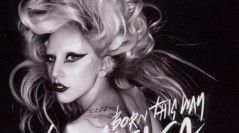
It’s been said that you achieve true fame if the world knows you by just one name. Madonna Louise Cicccone, or else Madonna, kept just one name but reinvented her image countless times, becoming one of the most successful performers of all times. Educated in Catholic schools as a child, Madonna danced her way to a four year scholarship at the University of Michigan and then New York’s Alvin Ailey School. After recording her debut album in 1983, her rise was meteoric, aided by the popularity of MTV, as she shocked and dared the public with her visible black lacy brassieres, bare midriff, outspokenness about virginity, abortion and out-of-wedlock births.
Madonna was born in Bay City, Michigan, the eldest of eight children (surely an error here as she is the eldest daughter, but third eldest child). Her father, Tony, was an engineer at Chrysler, her mother, whose name she was given, a housewife. Later, the family was to move south to Pontiac where she shared a room with two sisters. As a girl, Madonna spent her summers working in her father’s vegetable garden weeding and spraying insecticide, or she was sent to her grandparents’ house in Pennsylvania where she would be expected to work on the house and garden. The regime was rooted in instilling ethical work.
The family was devoutly Catholic. On Good Friday, her mother would place a purple cloth over all the religious pictures and statues in the house. This was before she fell ill with breast cancer, which would take her life when Madonna was six. Like many children who lose a parent, Madonna expected her mother to return. But nobody talked about it. For years it seemed that way. Three years later, her father married again, this time to the family housekeeper who never acknowledged Madonna as her mother did. Going t church before school, doing housework that was assigned by dad’s chore chart, and no TV. This, incidentally, is her top tip for successful parenthood; no TV. Madonna was expected to defrost the freezer, wash the dishes, baby sit, and vacuum. She was a voracious reader and loved the stories her mother told her about a garden involving vegetables and a rabbit.
Like many teenagers, she knew that she would leave for the big city as quickly as she could. She says that she knew she wanted to leave Michigan from the age of five. She lasted one term at her Home-state University on a dance scholarship. Her heart wasn’t in it. Even though she’d never visited, there was really only one place for her: New York, the true home of the ambitious. She arrived, in her late teens, at La Guardia airport and took a taxi to Times Square. She had no money or connections and lived hand to mouth, eventually settling in a tenement on the Lower East Side at 4th and Avenue B. Every weekend she went dubbing in search of A&R personnel and DJs who might be able to assist her career. She recalls dancing to ‘Don’t You Want Me’ by the Human League at New York’s famous Danceteria club. With her first royalty paycheck, she bought a synthesizer and a bike which she had to carry up all six flights to her new apartment, a loft on Broome and West Broadway. Deep down she also carried much resentment about her family, was often unhappy and relied greatly on music, which she has written was ‘a vehicle for transcending misery (the story of my life)’ to get her through thin times.
Anyway, it is a pretty strange thing to sit and think about the fact that Madonna is one of the most famous women in the world. Fame is the defining aspect of her life, even more than her music, style, or the movies. Madonna will be remembered for being one of the most relentlessly self-realized people of the century. Along with Monroe and Ali, Madonna will be remembered for defining the times by inventing and changing and promoting herself with ambition and, in so doing, providing us with a way of understanding ourselves and remembering what we used to dance to, who we used to be.











